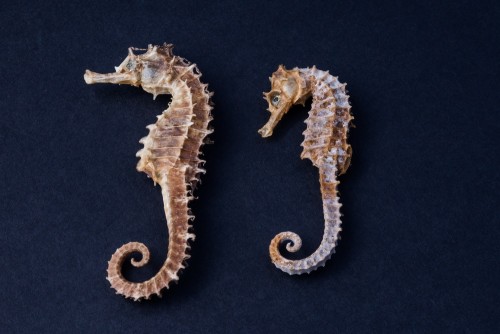The seahorse's tail can shrink to half its thickness without causing permanent damage to the seahorse's vertebrae. Researchers hope to use a similar structure for various biomimetic applications.\

By: Yael Halfman Cohen
The seahorse's tail can shrink to half its thickness without causing permanent damage to the seahorse's vertebrae. Researchers hope to use a similar structure for various biomimetic applications.
Engineers at the University of California, San Diego, were looking for a strong, stiff, light and flexible natural structure as a model for a robotic arm. At the beginning of the research, we examined the armor of various animals, including armadillo, crocodile and fish scales. Next, focus on the tail of the seahorse.
The tail of the seahorse excels in its flexible and strong structure and grasping abilities. The tail allows anchoring/grasping corals or algae, which helps the seahorse hide from predators such as sea turtles, crabs, and birds. The tail is flexible for the purpose of grasping, but also strong for the purpose of protecting the seahorse's internal organs such as the vertebrae. So far the seahorse tail has not been studied as armor.
During the study, the reaction of the seahorse's tail to different actions, such as applying pressure from different angles, was examined. It was found that the tail can shrink up to 50% of its original thickness without causing irreversible damage to the spinal vertebrae. The flexibility of the tail is related to its structure. The tail of the seahorse consists of 4 plates of bones that surround the vertebrae, and can slide over each other. The bones can move in a relative motion, one on top of the other, or in a rotational motion, so the tail can bend and turn.
An explanation and illustration of the structure of the tail is attached in the video
In the next step, the researchers plan to produce artificial bone plates in XNUMXD printing, and attach polymers to them that will function as muscles. The final goal - the development of a flexible robotic arm that will be a combination of a hard and soft robot, and will be able to grasp objects of different shapes and sizes. This biomimetic arm could be used in a variety of applications such as: medical devices, underwater exploration or bomb detection.
For more information

3 תגובות
which is really special because it doesn't have a terribly special tail
A seahorse's tail is shorter than all life in the sea
The tail of the seahorse is very special among the animals that have a tail